Spin, 2006-2012
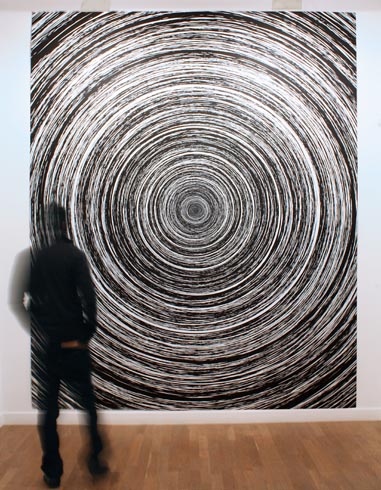
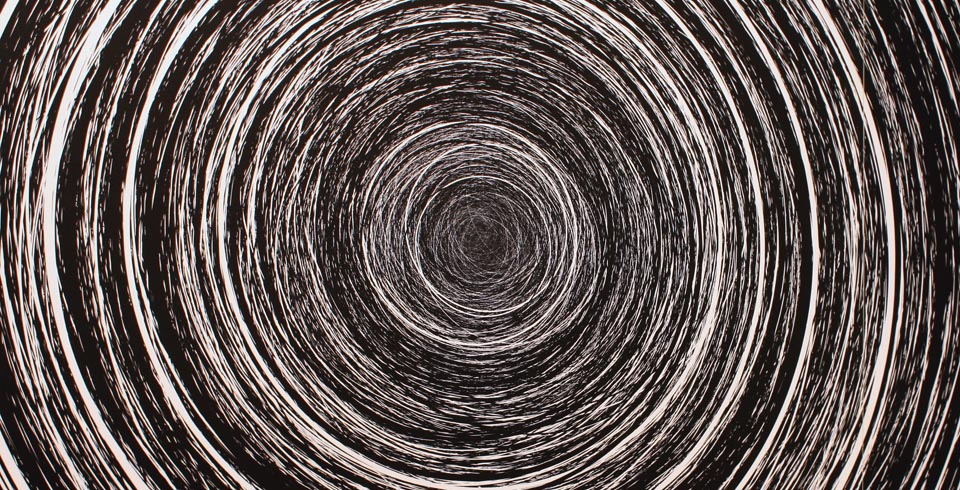
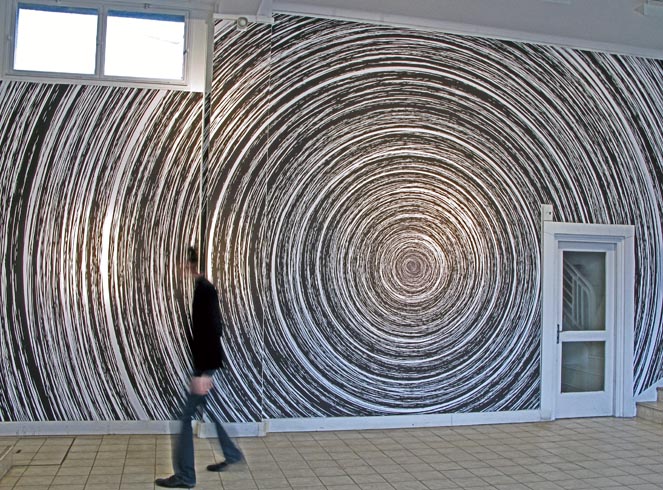

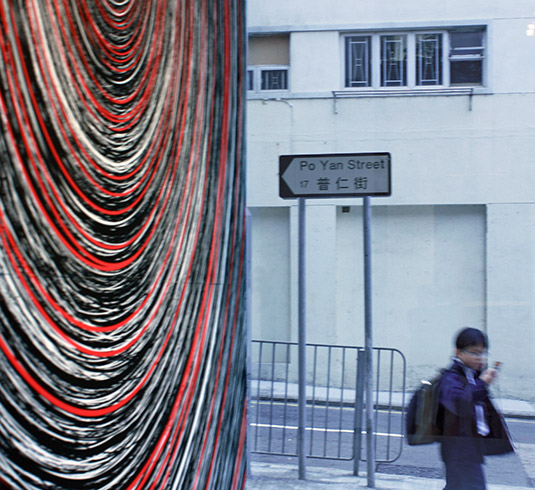
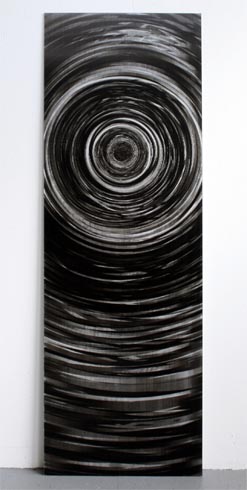

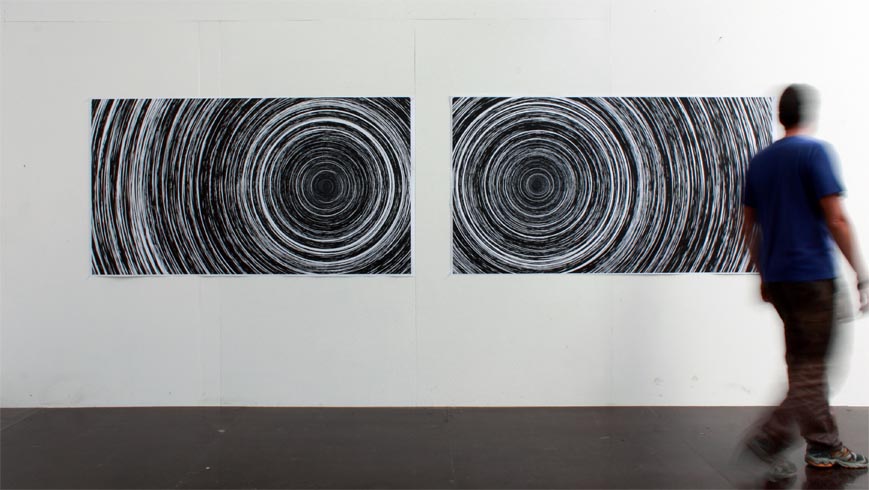
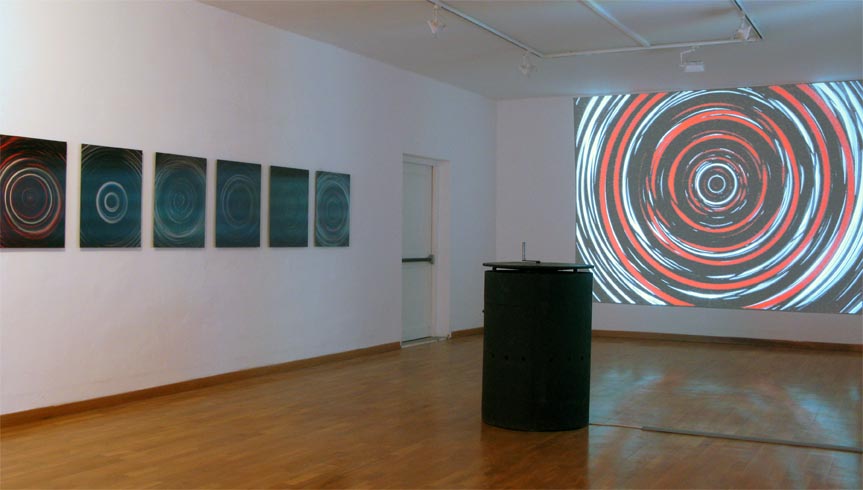
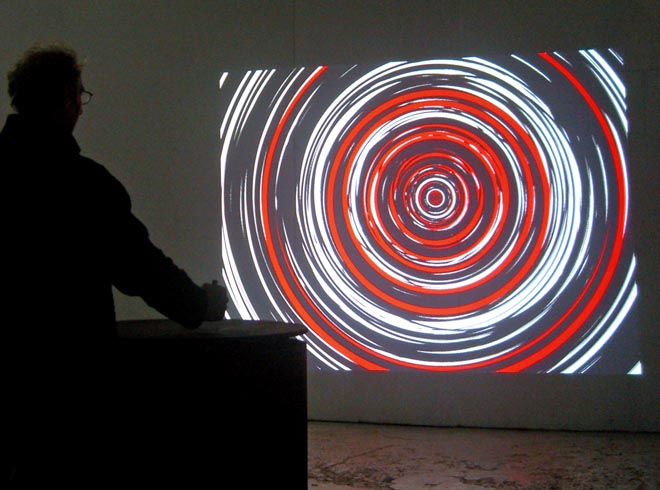
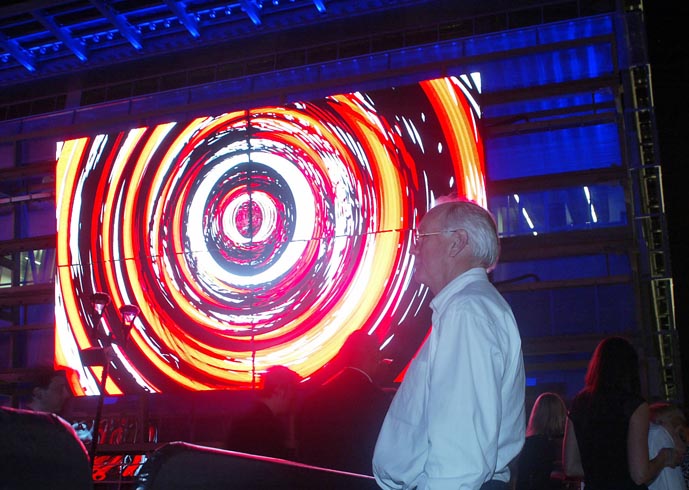
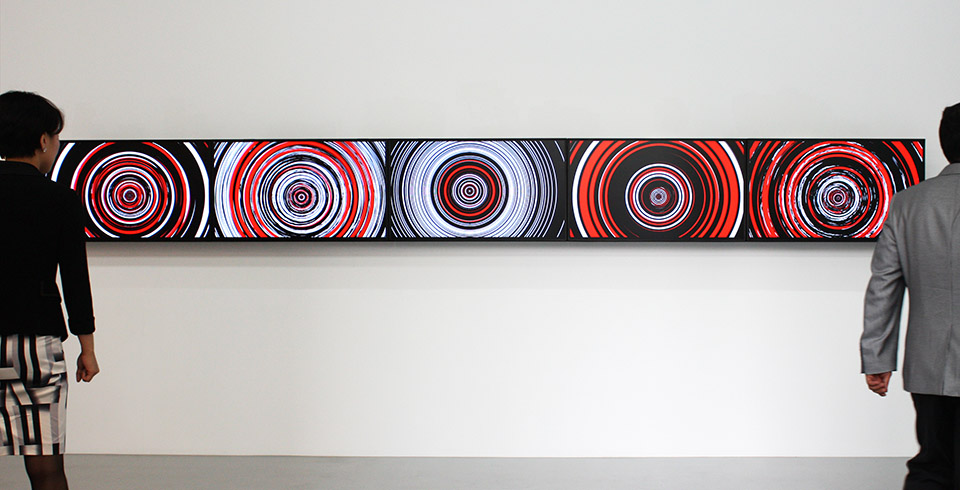
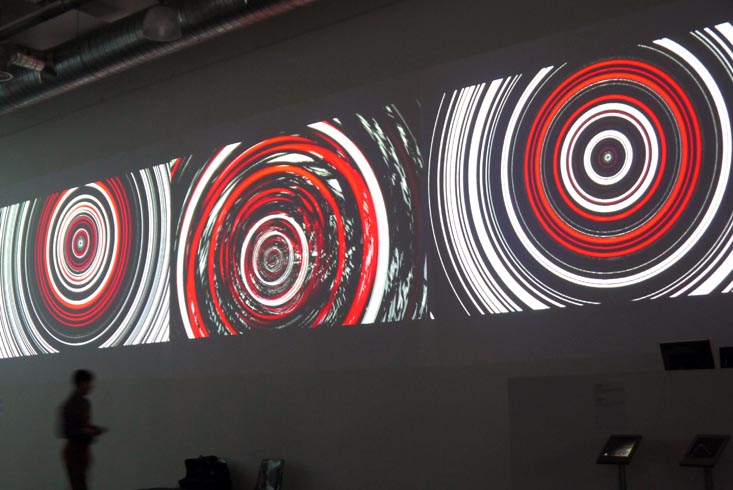
Spin is a digital generative process based on the endless concentric proliferation of thousands of rotating circles which build up hypnotic structures. The more they spin, the more they multiply and at a certain point, they become more and more chaotic and finally end up in a vacuum, a vortex, a void image. Then another proliferation cycle of spinning circles starts again. This loop process is potentiality endless. Pascal Dombis moves the aesthetic research of rotating circles, including research by Marcel Duchamp in the first part of the XXth century, up to a new digital computer space, and focuses his attention on a problem on how to use the algorithmic principles of generative art to conjure up sensationalist environments (such as vertigo, vortex or infinitude) which can no longer be grasped by the technology that has engendered them.
Spin est basé sur la prolifération concentrique de milliers de cercles en rotation. Plus ils tournent et plus ils se développent. L’accumulation de ces cercles compose une structure hypnotique qui, à un certain point, commence à devenir de plus en plus chaotique, pour finalement aboutir à une image vide. Alors un nouveau cycle de prolifération de cercles en rotation démarre … et ce mécanisme de boucle est potentiellement sans fin. Ce qui m’intéresse ici est comment un principe algorithmique de rotation de cercles (principe déjà utilisé par de nombreux artistes, notamment Marcel Duchamp) associé à une simple interactivité peuvent créer différents environnements sensationnels (vertige, vortex, sensation d’infini …) qui vont au delà du processus technologique qui les a engendrés.